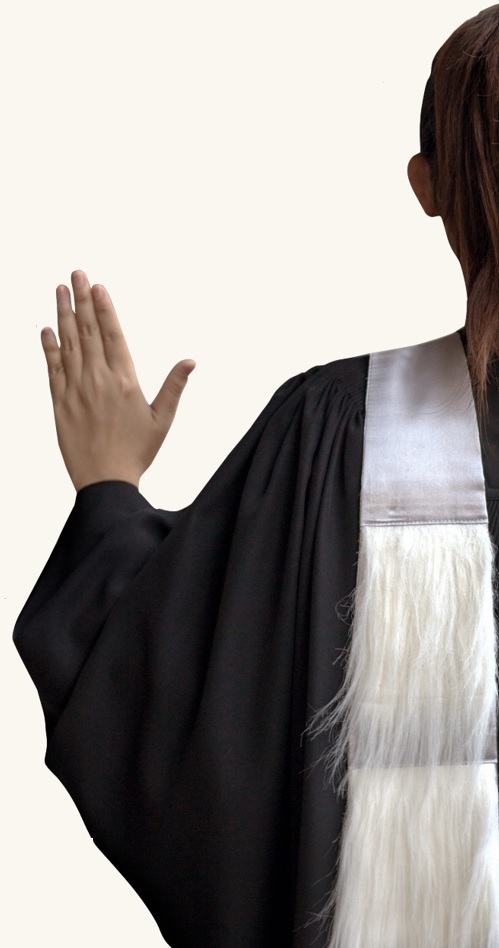
Think about the following questions.
1. When people are arrested in your country, what rights do they have?
2. What are the pros and cons of using juries to decide criminal cases?
3. Do you believe that people are basically honest and respectful of society's laws?
VOCABULARY PREVIEW
Match each New Academic Word List(NAWL) word with the correct definition.
- conception
- explicitly _____
- dictate _____
- render _____
- scenario _____
- proposition _____
- a. to officially administer, direct, or state
- b. openly and clearly
- c. a statement to be proved, explained, or discussed
- d. a general idea
- e. a description of what could possibly happen
- f. to officially report or declare
THE PRESUMPTION OF INNOCENCE

One of two basic attitudes sets the tone of a legal system. One attitude presumes a defendant1 is innocent until proven guilty. This presumption places the burden of proof on the prosecution2. The second basic attitude presumes the opposite: that a person is guilty of the crime he or she has been arrested for, and proof must be given to the contrary. Most legal systems embrace the first attitude, which is considered by many to be a basic human right. In fact, it is called for by Article 11 of the United Nations Universal Declaration of Human Rights.
The presumption of innocence is based on a conception of people as mostly honest and respectful of society's laws. This principle aims to preserve the human dignity3 of accused persons, as well as to protect them from false accusations by corrupt authorities or others. Because the burden of proof is on the prosecution, the law does not require an accused person to prove his or her innocence or to produce any evidence at all. If the prosecution fails to make its case, the person is regarded as not guilty of the crime. Essentially, the idea behind this legal proposition is that to punish an innocent person is the worst possible outcome. The 18th-century British jurist Sir William Blackstone summarized this ideal by saying, “"Better that ten guilty persons escape than one innocent suffer."
In jury systems like that of the US, a jury is formed to render a verdict4 for court trials. Jury members are summoned5 from the general population and consist of individuals who typically have little or no legal training. It is, therefore, necessary to ensure that the persons sitting on the jury are aware of the obligations each side has in presenting their case. In the US, jury members may be read the following explanation regarding the “burden of proof” in a legal case: “The defendant enters this courtroom as an innocent person, and you must consider him to be an innocent person until the State convinces you, beyond a reasonable doubt, that he is guilty of every element of the alleged6 offense. If, after all the evidence and arguments, you have a reasonable doubt as to the defendant's having committed any one or more of the elements of the offense, the law explicitly dictates you must find him not guilty.”
Proof "beyond a reasonable doubt" means that a reasonable person would consider the accused criminal guilty. This standard does not require the government to prove a defendant guilty beyond all possible doubt. On the other hand, it is not enough to show that the defendant is probably guilty. In a criminal case, the proof of guilt must be stronger than that.
For instance, imagine that a man is accused of stealing something from someone's home. There were no witnesses to the crime, and the police did not find the accused man's fingerprints at the scene. Police arrested the defendant because he tried to sell the item that was stolen, but he said that he found the stolen item discarded7 in a bush. In this case, a jury might consider it likely that the suspect stole the item. But his claim that he found it is reasonable, and there is no evidence against it. Thus, in this scenario, the proper verdict would be "not guilty."
The presumption of innocence is based on the idea that juries should be guided only by a full and fair evaluation of the evidence. Whatever the verdict may be, it must not be based upon speculation8. Nor should it be influenced in any way by bias, prejudice, sympathy, or a desire to bring an end to the duty of the jury.
New Academic Word List
- defendant 1 : n. someone who is accused of a crime in a court of law
- prosecution 2 : n. the lawyer or lawyers representing the government in a criminal case
- dignity 3 : n. the quality of being worthy of honor or respect
- verdict 4 : n. the decision made by a jury in a trial
- summon 5 : v. to order someone to appear
- alleged 6 : adj. accused; stated without definite proof
- discarded 7 : adj. thrown away
- speculation 8 : n. ideas or guesses about something unknown9
READING COMPREHENSION
A ‣ Mark each statement as true (T) or false (F) according to the reading.
- "Guilty until proven innocent" is part of the Universal Declaration of Human Rights.
- True
- False
- Most countries have adopted the "innocent until proven guilty" concept.
- True
- False
- US juries are sometimes given an explanation of their duty.
- True
- False
- In the US, the state must only prove that the accused is likely to be guilty.
- True
- False
- Juries should rely only on evidence and not on their own theories about the crime.
- True
- False
B ‣ Choose the best answer according to the reading.
- What is the reading mainly about?
- a. How the politics, religion, and geography of a country shapes its legal system
- b. The meaning of Article 11 of the UN Universal Declaration of Human Rights
- c. How the presumption of innocence functions within legal systems
- d. The history of the idea that the accused should be presumed innocent
- What can be inferred about the presumption of innocence from paragraph 2?
- a. It means an accused person does not have to speak in court.
- b. It is designed to make the job of the prosecution much easier.
- c. It is based on a sympathetic view of convicted criminals.
- d. It probably made British jurist Sir William Blackstone angry.
- Jury members typically _____.
- a. have legal training
- b. have trouble presuming innocence
- c. are ordinary citizens
- d. need several days to decide on a verdict
- In paragraph 5, the word scene means _____.
- a. a stage setting
- b. a series of events in a story
- c. an area of activity involving many people
- d. the place where something occurred
C ‣ Fill in the blanks with information from the reading.
- _____ summed up the idea of "innocent until proven guilty" in a famous saying.
- Accused people are not required to prove their _____ .
- A jury's _____ must not be influenced by bias or prejudice.
SUMMARY
Fill in the blanks with the phrases in the box.
- probably guilty
- innocence or guilt
- basic human right
- the general population
- burden of proof
- free a guilty person
Within a legal system, there are two basic ways of viewing suspects: you presume either 1 _____. Most systems are based on the presumption of innocence, and many actually consider it a(n) 2 _____. In systems that presume innocence, the 3 _____ is on the government, not the defendant. This principle assumes that it is better to 4 _____ than to punish an innocent person. In the US, juries are chosen from 5 _____, and the presumption of innocence is explained to them. In addition, they are told that the government must prove guilt beyond a reasonable doubt, not just that a defendant is 6 _____.
VOCABULARY PRACTICE
Fill in the blanks with the words in the box. Change the form if necessary.
- conception
- render
- scenario
- dictate
- explicitly
- proposition
- After the conquest, the invading army _____ the terms of the surrender to the losing side.
- The teenagers jumped into the lake in spite of the sign that _____ warned against swimming there.
- The _____ that human beings are related to apes has caused a great deal of controversy.
- The two political parties have very different _____ of how government should work.
- The most likely _____ is that our team will make it to the finals but end up in second place.
- Most people think the purpose of courts is not just to settle disagreements but to _____ justice.
SUPPLEMENTAL READING
The Innocence Project

In a 2012 report, a US law professor, Samuel Gross, found that four percent of prisoners facing the death penalty had been wrongly convicted. These findings have helped focus media attention on DNA evidence used to overturn wrongful convictions. At the center of this attention is the Innocence Project, a non-profit legal organization that uses DNA evidence to help the victims of wrongful conviction successfully appeal their sentences and, in many cases, seek compensation for their ordeals.
Race and socioeconomic status are major factors in concerns about wrongful conviction. As of 2021, there have been 375 people in the US exonerated by DNA evidence. Of those, 225 were African Americans, the overwhelming majority of whom came from low-income backgrounds. Some critics of the legal system have held these numbers up as evidence of racial bias. However, this accusation is difficult to support without evidence that the real criminals were not from the same race and economic background. What Innocence Project attorneys can say with certainty is many of the wrongly convicted lacked the financial resources to effectively defend themselves in court.
Other issues in wrongful convictions, according to the Innocence Project, have to do with human error. In over seventy percent of its cases, eyewitness misidentification was found to be a major factor. This was followed by outdated, inaccurate, or inappropriately executed forensic science, which factored into forty-seven percent of overturned cases. Interestingly, false confessions played a role in twenty-eight percent of cases. Innocence Project attorneys explain the wrongly accused were often offered lighter sentences in exchange for confessions and were advised by their attorneys to accept the deals, regardless of their innocence.
Fill in the blanks with information from the reading.
- The Innocence Project relies mostly on _____ to overturn wrongful convictions.
- Some people believe the percentage of African Americans among the wrongly accused proves that there is _____ in the system.
- _____ is the most common factor in wrongful convictions.

Leave a comment
Load more